Heartbroken to see dead clams on white beaches in Nghe An
(Baonghean.vn) - It was almost harvest time but nearly 15 hectares of clams of Nghi Thiet commune (Nghi Loc) suddenly died, causing estimated damage of up to billions of dong.
Billions of dollars drift away with dead clams
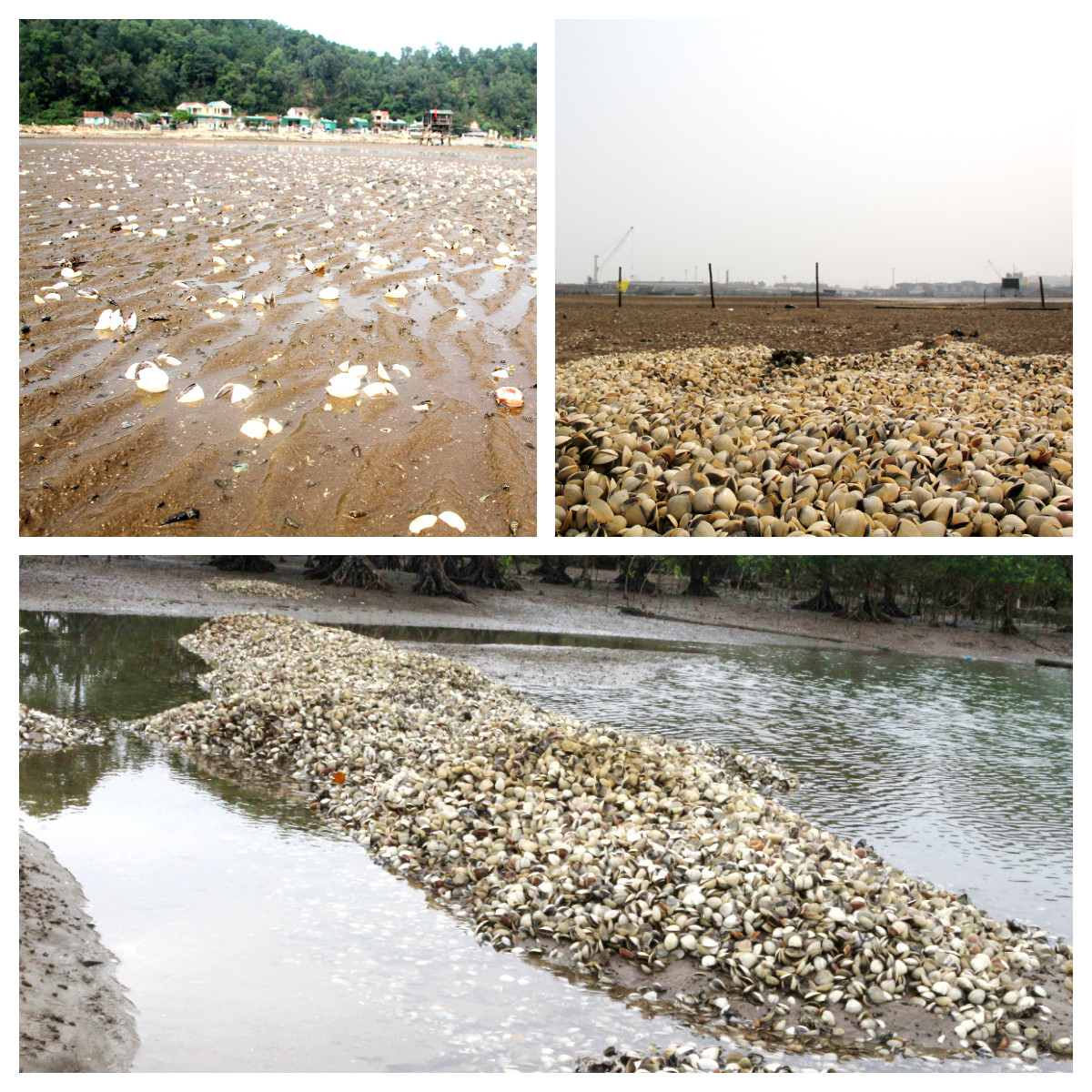 |
| Dead clams were washed away by the waves into long white sandbanks. It is estimated that people lost about 315 tons of clams, causing damage of about 5-7 billion VND. Photo: Thanh Phuc |
When the tide went down, the clam beach was all shells, the dead clams with their mouths open were washed away by the waves into long white sandbanks. Despite the cold and rainy weather, clam farmers still braved the rain to urgently collect the dead clams and renovate the beach in time for the next farming season.
Mr. Pham Van Xan, Rong hamlet, Nghi Thiet commune, a household raising nearly 1.54 hectares of clams, said: In 2019, clams died sporadically, but that was normal. But starting from the end of the 11th lunar month, the number of dead clams gradually increased with higher density and up to now, the number of dead clams has reached 80%, causing the family to lose 600 million VND.
As one of the households with a large clam farming area in the commune, the clams died, causing Mr. Nguyen Sy Thanh's family in Chua hamlet to lose nearly 1 billion VND. Accordingly, Mr. Thanh released 10 tons of clam seeds on an area of 2.4 hectares of farming ground in mid-April 2019, planning to harvest and sell for Tet and spread until the end of March, then release a new crop of clams around May. However, the clams suddenly died, causing his family to lose everything. Mr. Hai bitterly said: "We poured so much capital and effort into it, now the clams are all dead, money goes down the drain."
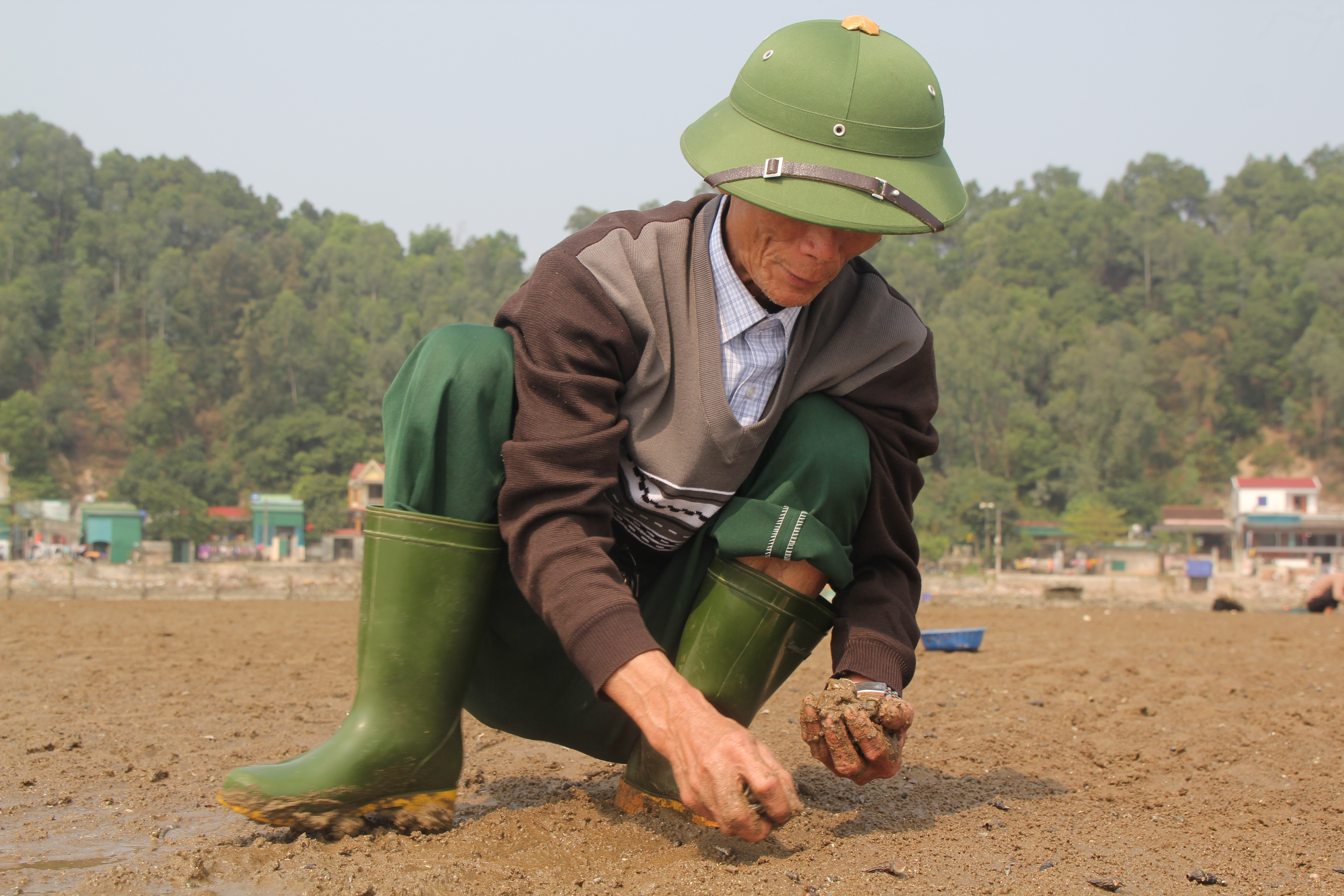 |
| With an area of 1.54 hectares of clams, the clam death rate was 90%, Mr. Pham Van Xan, Rong hamlet lost 600 million VND. Photo: Thanh Phuc |
Raising clams on tidal flats depends a lot on weather and water conditions, so Nghi Thiet people consider this a "gambling" job, some years they make money, some years they lose. But never before have clams died en masse, resulting in a total loss like this year. "In nearly 20 years of raising clams on tidal flats, there have been years when we made a profit of several hundred million, and some years when we had bad harvests and lost income. Raising clams requires only investing in seeds and care, so even if the harvest fails, it is not a loss. But like this year, with clams dying en masse like this, we are left with nothing, losing all our capital and effort."
The entire commune has an area of 14.47 hectares of tidal flats with 7 households raising clams. Up to now, 7/7 clam farming households have experienced clam deaths at a rate of 60-90%, commercial clam output has been damaged by about 350 tons, and people are estimated to have lost about 5-7 billion VND.
Not only did they lose hundreds of tons of clams, but collecting dead clams and renovating the farming grounds also cost tens of millions of dong per hectare. Currently, the clam carcasses have been washed away by the waves, forming kilometers-long sandbanks along the tidal flats. Although all human resources have been mobilized, they still cannot handle all the dead clams. Therefore, families are forced to hire people to collect dead clams at a rate of 25,000 VND/person/hour, each clam farming household spends tens of millions of dong more to collect dead clams.
COLLECTING DEAD CLAMS, TREATMENT OF FARMING FIELDS
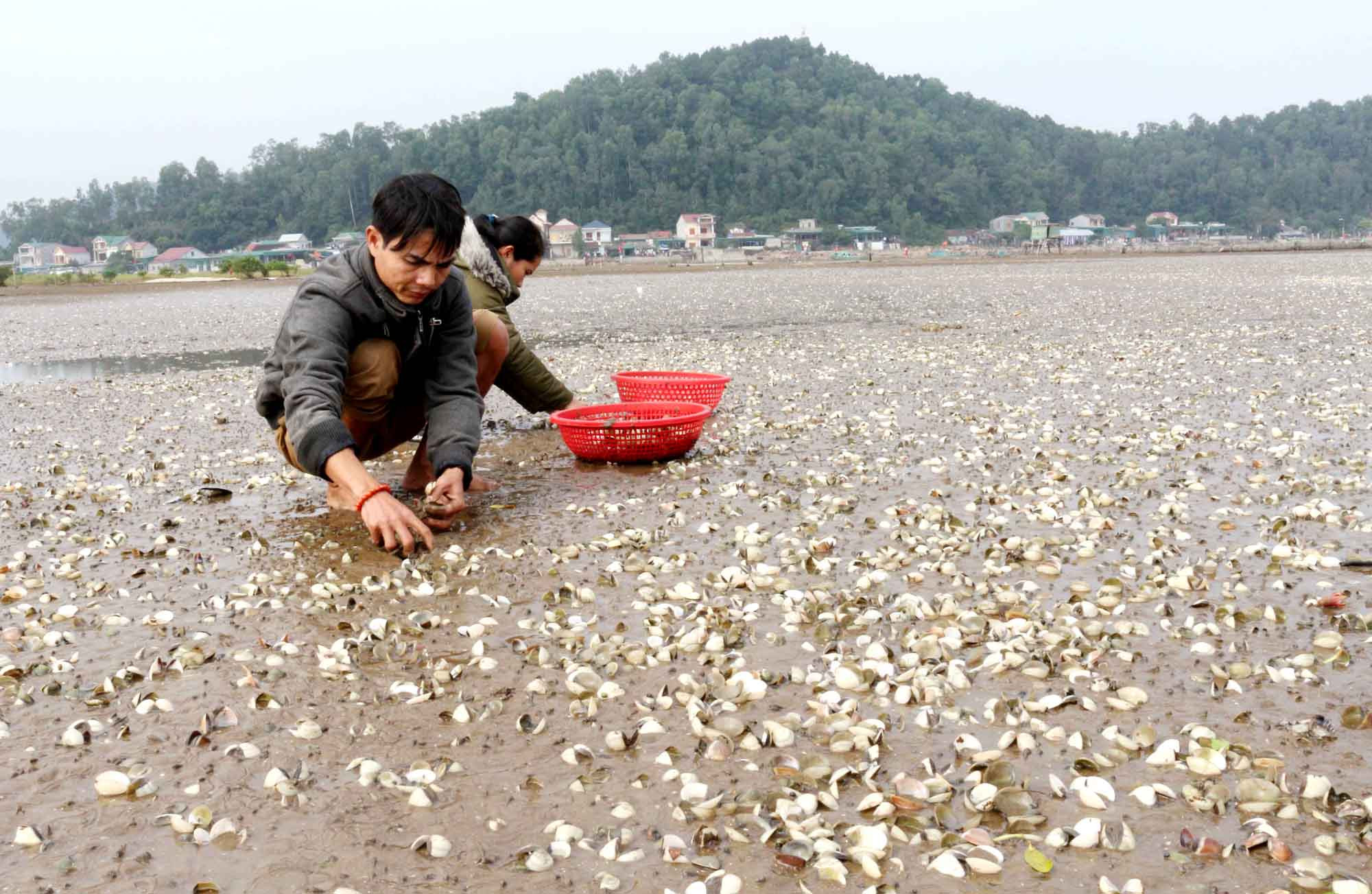 |
| Taking advantage of the sunny weather, Nghi Thiet people collect live clams and dead clams. Photo: Thanh Phuc |
After receiving information about the mass deaths of clams, Nghi Thiet commune authorities promptly inspected and reported to the Nghi Loc district Department of Agriculture. The district sent officials to the area to collect samples from clam farmers for testing.
Ms. Tran Thi Hoang Van, an expert from the Department of Agriculture and Rural Development of Nghi Loc district, in charge of aquatic products, said: “The test results show that the clams died not due to disease. All clam samples tested negative for the perkinsus parasite (the parasite that causes death in clams). We have reported to the Department of Natural Resources and Environment, requesting that water sources in clam farming areas be monitored.”
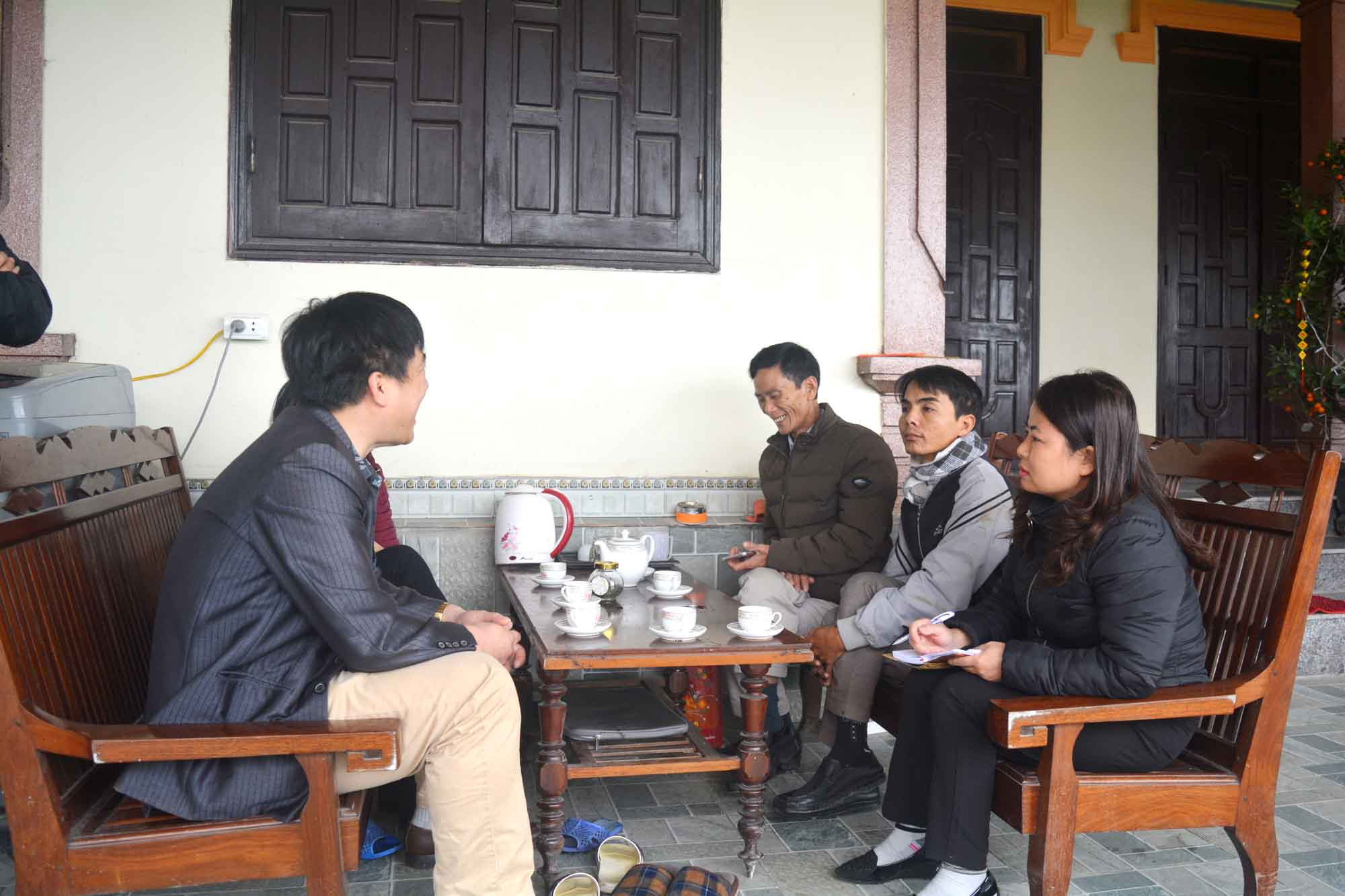 |
| The Department of Fisheries guides farmers on how to handle dead clams and treat farming grounds. |
Yesterday afternoon (February 17), the Department of Fisheries sent a team of officials to inspect the site, encourage and share with the people and guide them on how to handle the farming grounds, prepare technical factors for the next farming season. Mr. Le Van Huong - Deputy Department of Fisheries said: "Currently, the cause of clam death is unknown, disease factors have been ruled out and waiting for the results of environmental monitoring. Many assumptions have been made such as: The quality of the input seed has not been tested because people themselves buy it from businesses in the north; The farming density is too high compared to the industry's recommendations (accordingly, people release 300-350 clams/m2exceed 100-150 individuals/m2compared to recommendations); due to unusual weather conditions compared to previous years and not excluding environmental factors and problems with bottom sediments...
It is worth noting that while there were signs of scattered clam deaths lasting throughout 2019, the farmers did not promptly report to local authorities and relevant agencies for inspection and handling when the first signs appeared, but waited until the clams died en masse before reporting, thus making it difficult to determine the cause.
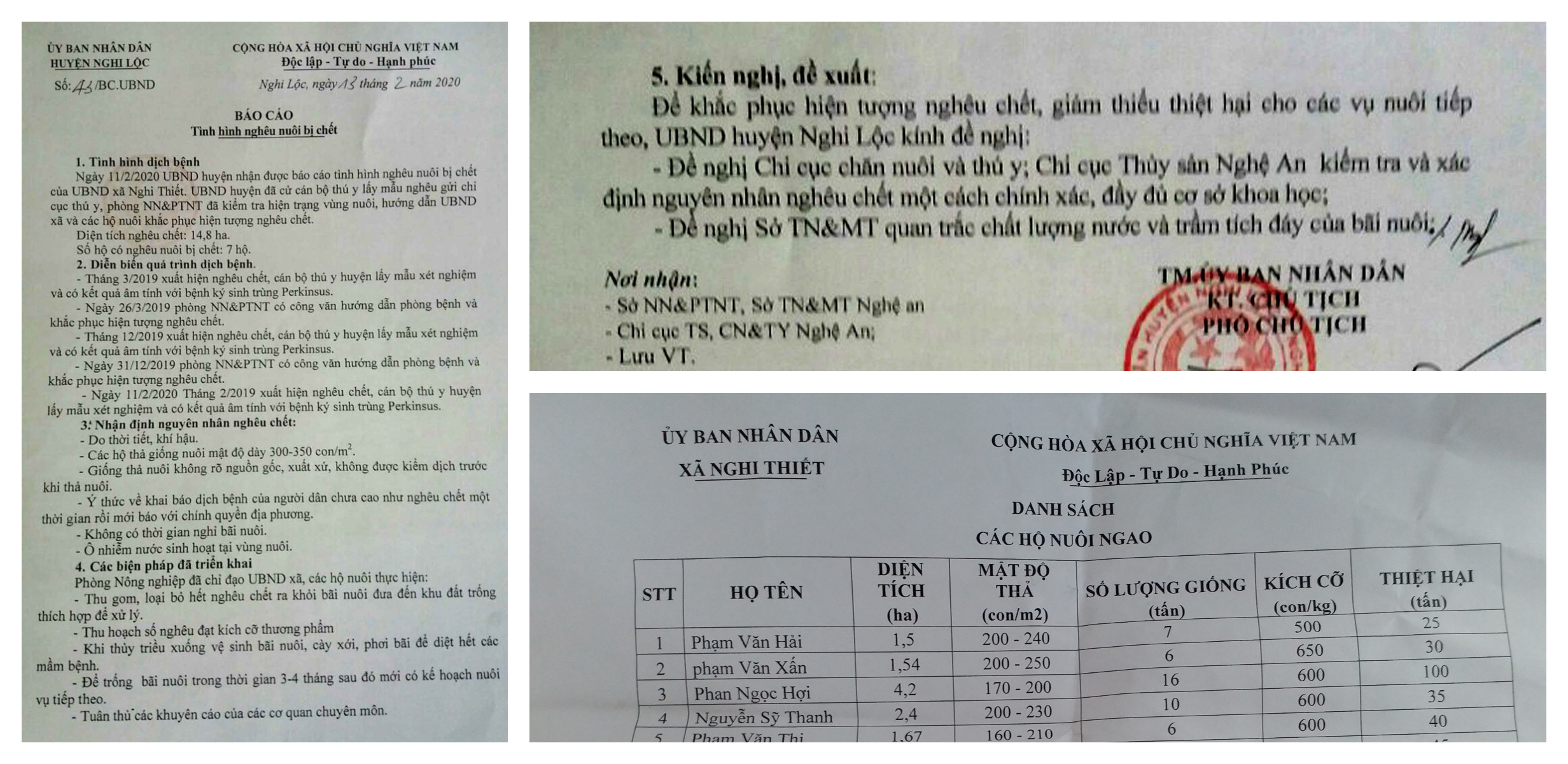 |
| Statistics on dead clam damage and instructions on how to handle it in Nghi Loc district. Photo: Thanh Phuc |
While waiting for the cause to be clarified for a solution, for now, relevant authorities are instructing people to collect and treat dead clams; sprinkle lime to disinfect the breeding grounds and ask people to let the grounds rest until September at the earliest before re-raising. At the same time, they are advising people to find quality and origin sources when releasing juveniles; and to release them at the right density, not too thick.
